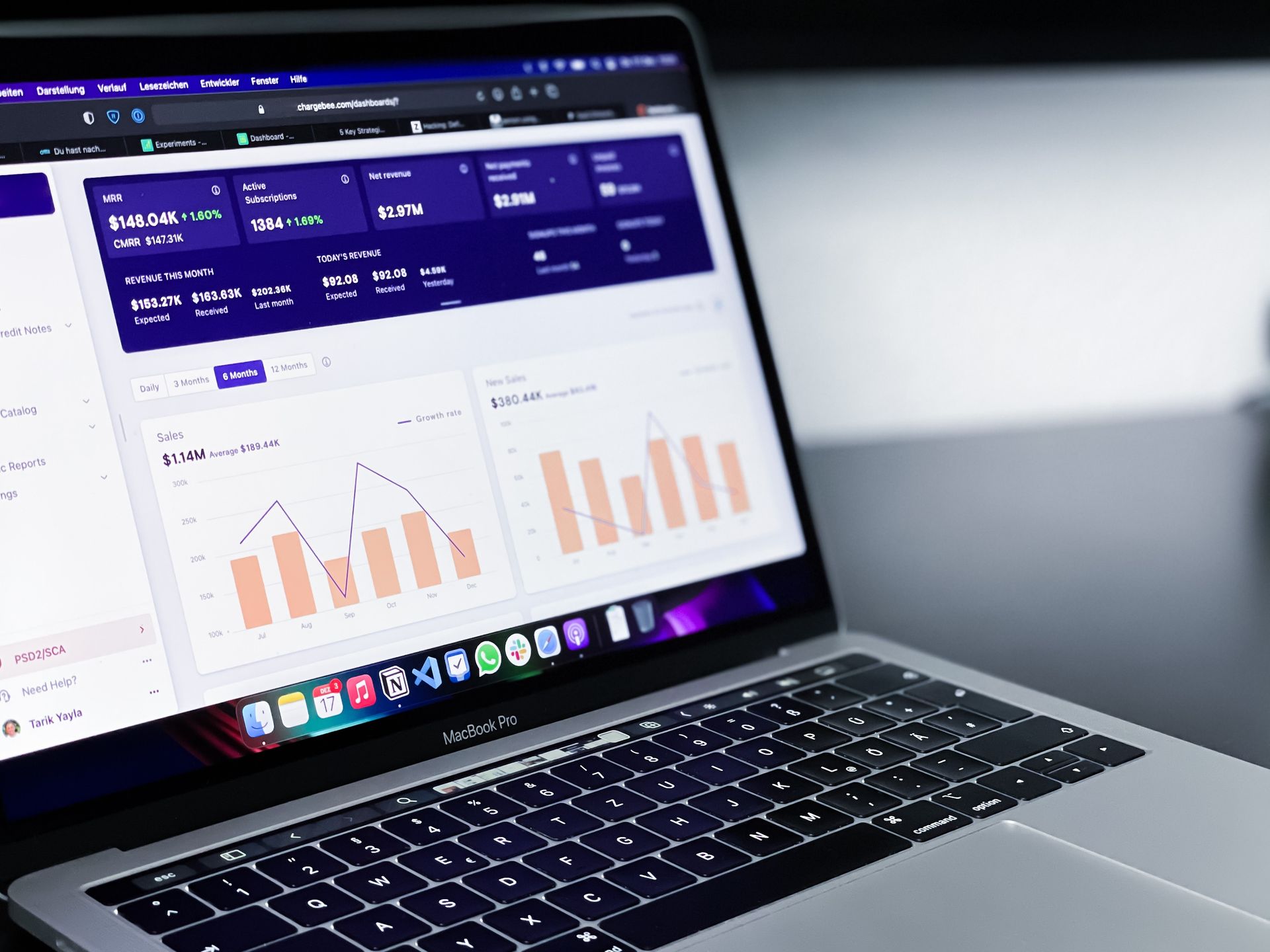How Your Team Can Get the Most Out of Your Business Data
Data Solutions That Drive Desired Business Outcomes
In today's data-driven world, companies have access to more data than ever before. With the right tools and expertise, this data can be leveraged to gain valuable insights into every aspect of a business. From customer behavior to supply chain management, data can be used to drive decision making and increase profits. However, many companies struggle to make the most of their data, either due to a lack of expertise or an inability to identify the most valuable insights.
At Brewster Consulting Group, we understand the challenges that businesses face when it comes to managing and leveraging their data. As experts in data management and operations, we've helped numerous companies make the most of their data and use it to make better, more informed decisions.
The first thing that an organization must do to make the most of their data, is
start with the desired business outcomes and requirements, not the technology. Read that again. It makes no sense to fall in love with a business intelligence or analytics platform if you do not understand how that platform will drive business value or solve business problems. If you want to maximize the value of your data, start by asking yourself, “What are my non-negotiables, and what outcomes do I want leveraging my data to achieve?”. Answering this question should be the springboard into any organized data effort.
When your staff is working through that question, you will probably think of outcomes like increasing revenues, decreasing expenses, improving customer retention, or measuring the performance of the team. In this article, we'll share five key ways that companies can use their data to achieve their desired outcomes. By implementing these strategies, businesses can gain a competitive edge and position themselves for long-term success.
Understand customer behavior
Understanding customer behavior is crucial for any business looking to succeed. Deciphering customer data allows businesses to identify customer preferences and patterns, which they can then use to tailor their marketing efforts and improve their products or services. Customer data can provide insights into the following areas:
- Preferences: By analyzing customer behavior, businesses can identify which products or services are most popular, what features customers value most, and what motivates them to make a purchase. This information can be used to create more targeted marketing campaigns that are more likely to resonate with customers.
- Satisfaction: Sorting through customer feedback and other metrics opens the door for businesses to identify areas where customers are dissatisfied and take steps to improve these areas. This can help businesses to retain more customers and increase loyalty.
- Retention: Businesses can identify customers who are at risk of leaving and take steps to retain them. This can include offering personalized discounts or other incentives to keep them engaged.
Identify and target high-value customers
When your team better understands customer behavior, you help your marketing and sales teams more effectively target your ideal customers. By analyzing data on customer behavior, companies can identify which customers are most valuable, in terms of revenue generated and potential for future sales. This information can be used to develop targeted marketing campaigns that focus on high-value customers, increase customer loyalty, and ultimately increase profits. We’ve listed some examples below:
- Personalized marketing: Businesses can identify which products or services are most popular with high-value customers and create personalized marketing campaigns that speak directly to them.
- Loyalty programs: Businesses can identify customers who are most loyal and offer them targeted discounts or other incentives to keep them engaged.
- Cross-selling and upselling: Businesses can discover opportunities to cross-sell or upsell products or services to high-value customers. This can increase the overall revenue generated from these customers.
Optimize pricing and product offerings
Data can help companies optimize their pricing strategies and product offerings. Sales data and customer behavior aid companies in identifying which products are most popular, which products generate the most revenue, and which products have the highest profit margins. Companies with an optimized data strategy make more informed decisions about pricing and product development, resulting in a more intentional product mix. A focused product mix allows your team to develop a pricing strategy that increases revenue and total profits.
- Dynamic pricing: Remember the supply and demand curve that we all learned in ECON 101 but have never put into practice in real life? Understanding market trends are key. Companies can adjust their prices in real-time based on supply and demand to optimize their revenue and profit. For example, airlines often use dynamic pricing to adjust ticket prices based on factors such as demand and time of day.
- Price testing:
Companies can use A/B testing to experiment with different pricing strategies and determine which ones are most effective. For example, an e-commerce retailer might test two different prices for a product and see which one generates more sales. This helps identify the optimal price of your product on a demand curve. It can also help you identify if you need to creatively expand your product offerings to offer different price points. An example of this would be offering discounts and time-sensitive offers for online shoppers. A brand can then collect the data and compare a customer’s buying behavior with normal prices to the discounted rate to determine how favorably they react to the lower prices.
- Competitive analysis: By analyzing the prices of their competitors, companies can adjust their own prices to stay competitive and maximize profits. For example, a bank may use this strategy when pricing deposit products like CDs. When Banks want to attract more deposits, they will want to land on the bank rates page for top deposit rates.
Streamline operations
One of the biggest ways that using business data can increase profits and margins is by streamlining their operations. After synthesizing data on production processes, inventory levels, and supply chain management, companies can identify areas where efficiency can be improved, reduce waste, and cut costs. This can lead to significant savings and increased profits in the short and long term.
- Analyze production processes: By reviewing production processes, businesses can identify areas where efficiency can be improved, reduce waste, and cut costs.
- Optimize inventory management: Businesses can identify areas where inventory can be reduced without impacting product availability. This can lead to significant cost savings.
- Optimize supply chain management: By analyzing data on suppliers and transportation costs, businesses can identify areas where costs can be reduced or supply chain efficiencies can be improved.
- Optimize Vendor & Technology Expense: You have to invest in technology, or you’ll lag behind competitors, but often companies will find themselves using 3-4 different applications across the enterprise that serve the same function. After reviewing those transactions, you can identify repetitive behavior and then consolidate vendors with pricing discounts for larger volumes. You’ll end up paying less for the same functionality.
Measure and track key performance indicators
Measuring and tracking key performance indicators (KPIs) that are critical to success is essential. By tracking metrics such as revenue, customer acquisition cost, and customer lifetime value, companies can identify areas where they are excelling and areas where improvements can be made. This information can be used to develop strategies for improvement, allocate resources more effectively, and ultimately increase profits.
- Acquisition and retention: Tracking customer acquisition and retention rates can help businesses identify areas where they are succeeding and areas where they need to improve.
- Marketing ROI: Tracking the ROI of marketing campaigns can help businesses identify which campaigns are most effective and where they should focus their marketing efforts.
- Sales metrics: Tracking sales metrics such as conversion rates, average order value, and sales by product or category can help businesses identify which products or services are most successful and which areas need improvement.
- Attract Investors: For startups looking to attract VC or Private Equity investors, having a clear understanding of your KPIs and effectively communicating them will not only attract more investors, but it will also lead to improved valuations.
Data is a valuable asset that can help companies make better decisions, optimize their operations, and increase margins. By using data to understand customer behavior, identify and target high-value customers, optimize pricing and product offerings, streamline operations, and measure KPIs, companies can unlock the full potential of their data and drive desired business outcomes.
However, this is much easier said than done. After all, data operations may not be your area of expertise and analytics may seem daunting. For smaller businesses, managers often feel like they aren’t yet large enough to wade into the analytics waters. However, understanding that your data is an asset itself is absolutely essential to the vitality of your company. Other than data, there is no other asset type where leaders sometimes decide to just not leve
rage its benefits. If you aren’t leveraging all your assets then you’re going to be passed by competitors who do. You don’t have the luxury of thinking it’s “too early”, or that it’s “too daunting” of a task to start using your data.
Building data systems that genuinely support your business is exactly what we do at Brewster Consulting Group.
Get in touch with us and let us show you how we can partner with you to transform your business using our applicable industry experience coupled with our powerful data solutions. We’re confident we can help.











